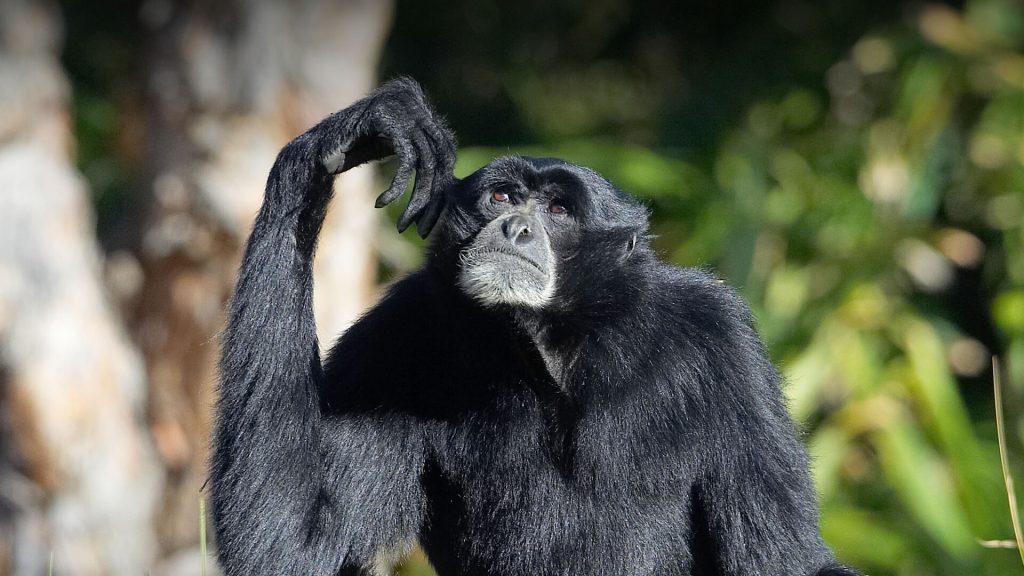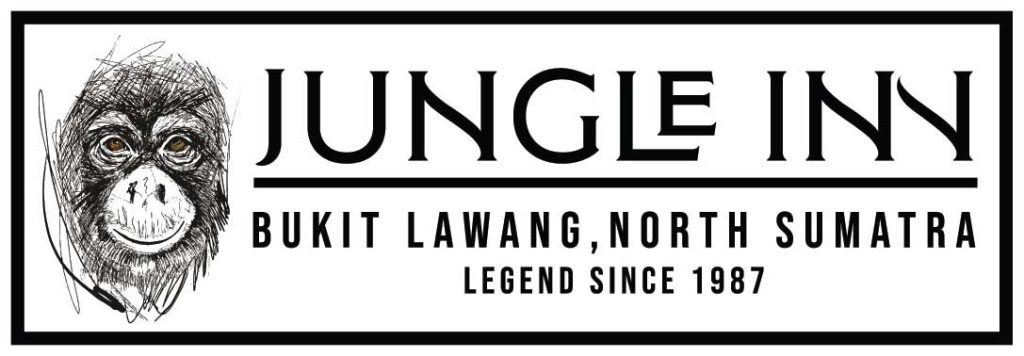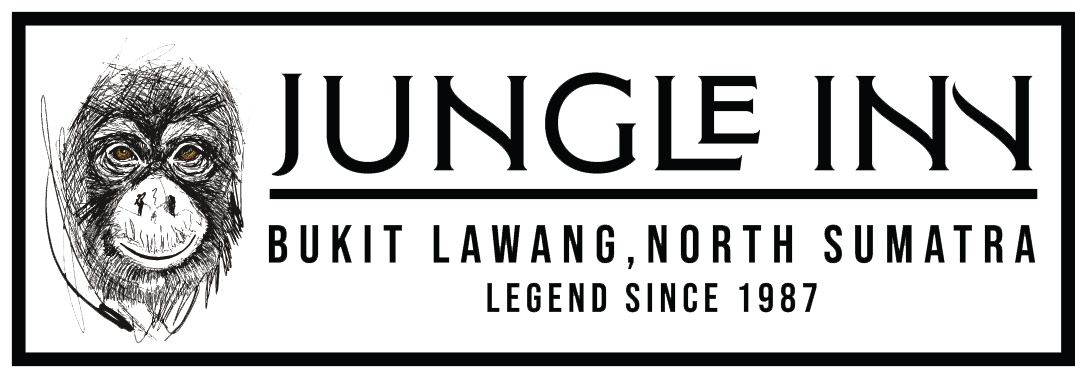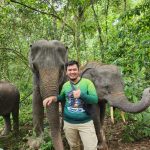In the heart of the lush and mysterious rainforests of Southeast Asia, a captivating creature swings effortlessly through the treetops, enchanting observers with its distinctive appearance and intriguing behaviors—the Siamang gibbon. Renowned as the largest gibbon species, Symphalangus syndactylus, these enigmatic primates unveil a world of complexity and unique characteristics that set them apart in the animal kingdom.
From their unmistakable black fur and resonant vocalizations to their remarkable social structures and pivotal role in shaping their ecosystems, Siamang gibbons stand as charismatic ambassadors of the diverse and fragile ecosystems they call home. Embark on a journey into the realm of these fascinating creatures as we unveil seven compelling facts that illuminate the mysteries of the Siamang gibbons.
7 Compelling Facts About Siamang Gibbons

Nestled within the lush rainforests of Southeast Asia, the Siamang gibbons (Symphalangus syndactylus) stand out as fascinating and enigmatic creatures. Known for their unique features and complex social structures, Siamang gibbons captivate the attention of wildlife enthusiasts and researchers alike. Here are seven compelling facts about these remarkable primates that shed light on their intriguing lives and the critical role they play in their ecosystems.
1. Distinctive Appearance
Siamang gibbons are easily recognizable by their distinctive appearance. They boast long, shaggy black fur, and unlike other gibbons, they have a distinctive throat sac that can be inflated to produce resonant calls. This sac serves as a vocal amplifier, allowing their haunting calls to echo through the dense forests where they reside.
2. Largest Gibbon Species
The Siamang is the largest of all gibbon species, with adults reaching a height of up to three feet and weighing between 18 to 29 pounds. Their long arms and powerful limbs make them well-adapted to their arboreal lifestyle, swinging effortlessly from tree to tree in the dense canopy.

3. Monogamous Bonds
Siamang gibbons are known for forming monogamous pairs, a rare trait among primates. Mated pairs are typically for life, and they exhibit strong family bonds. These families consist of the monogamous pair and their offspring, creating a stable and close-knit social structure.
4. Elaborate Vocal Communication
Communication is a crucial aspect of Siamang social life. Their elaborate vocal repertoire includes loud, melodious songs that can be heard over long distances. These songs serve various purposes, from marking territory to strengthening social bonds within the family unit.
5. Brachiation Experts
Siamangs are highly skilled brachiators, using their long arms to swing effortlessly between branches in the forest canopy. Their powerful arm muscles and hook-like hands allow them to navigate the treetops with remarkable agility, covering large distances in search of food and mates.
Also read: What You Should Know Before Visiting Bukit Lawang
6. Herbivorous Diet
The Siamang gibbon is primarily herbivorous, with a diet consisting of fruits, leaves, and other plant materials. Their foraging habits play a crucial role in shaping the ecosystems they inhabit, as they contribute to seed dispersal, promoting the growth and diversity of plant life.
7. Conservation Concerns
Despite their remarkable adaptations, Siamang gibbons face numerous threats to their survival. Habitat loss due to deforestation, poaching, and the illegal pet trade have led to population declines. Conservation efforts are underway to protect their natural habitats and raise awareness about the importance of preserving these unique primates.
Tracing the Journey of Siamang Gibbons

In the intricate tapestry of the natural world, the evolution of species unfolds with remarkable tales of adaptation and survival. Among the fascinating chapters written by the forces of evolution is the story of Siamang gibbons (Symphalangus syndactylus). Originating from the ancient landscapes of Southeast Asia, these primates have undergone a journey of transformation that showcases the ingenuity of nature.
From their unique physical features to their intricate social behaviors, exploring the evolutionary trajectory of Siamang gibbons provides insights into the dynamic processes that have shaped their existence. Join us on a captivating journey through time as we unravel the evolutionary marvels of these charismatic primates.
Primate Ancestry
The evolutionary lineage of Siamang gibbons can be traced back to a common ancestor with other apes and monkeys. Over millions of years, these early primates adapted to diverse environments, eventually giving rise to the distinct family of gibbons.
Adaptations for Arboreal Life
The dense rainforests of Southeast Asia served as the crucible for the evolution of Siamang gibbons. Their long arms, strong limbs, and unique hand structure evolved to facilitate brachiation, a form of locomotion involving swinging from branch to branch, allowing them to navigate the complex canopy with unparalleled agility.
Distinctive Throat Sac
One of the most distinctive features of Siamang gibbons is their inflatable throat sac. This unique adaptation evolved as a vocal tool, amplifying their calls across the dense forest canopy. The resonant songs play a crucial role in communication, marking territory, and maintaining social bonds within family groups.
Also read: Siamang Gibbons: The Singing Primates of Southeast Asia
Monogamous Social Structure
The evolution of monogamous pair bonding in Siamang gibbons is a remarkable aspect of their social structure. Over time, the benefits of forming stable, lifelong partnerships with a single mate likely contributed to increased reproductive success and the establishment of strong family units.
Herbivorous Diet and Seed Dispersal
The shift to a herbivorous diet in the evolutionary history of Siamang gibbons has ecological implications. As frugivores, they consume fruits and leaves, playing a vital role in seed dispersal. This mutually beneficial relationship with the plant life in their habitats contributes to the overall health and diversity of the ecosystems they inhabit.
Selective Pressures and Adaptability
The evolutionary journey of Siamang gibbons reflects the ongoing interplay between selective pressures and adaptive responses. Over time, environmental changes and challenges shaped their physical characteristics and behaviors, highlighting their capacity to adapt to the dynamic landscapes of their habitats.
Conservation Challenges
In the face of modern challenges such as habitat loss and human encroachment, the evolutionary history of Siamang gibbons takes on a poignant note. The ongoing threats to their survival underscore the delicate balance between evolution and the need for conservation efforts to ensure the continuation of their unique lineage.
Conclusion
The evolutionary story of Siamang gibbons is a testament to the intricate dance of adaptation and survival that has unfolded over millions of years. As these primates continue to swing through the rainforest canopies of Southeast Asia, their evolutionary legacy serves as a reminder of the interconnectedness of all life and the importance of preserving the natural world for generations to come.
Siamang gibbons, with their distinctive features, intricate social structures, and important ecological roles, stand as a testament to the incredible diversity of life in Southeast Asian rainforests. As we continue to learn more about these captivating primates, it becomes increasingly evident that their conservation is not only crucial for their own survival but also for maintaining the delicate balance of the ecosystems they call home.

Alfath Dewantara (Alde) is a passionate advocate for Bukit Lawang and Indonesian travel. As a manager of Jungle Inn & Restaurant, Alde is dedicated to providing guests with an unforgettable experience.






